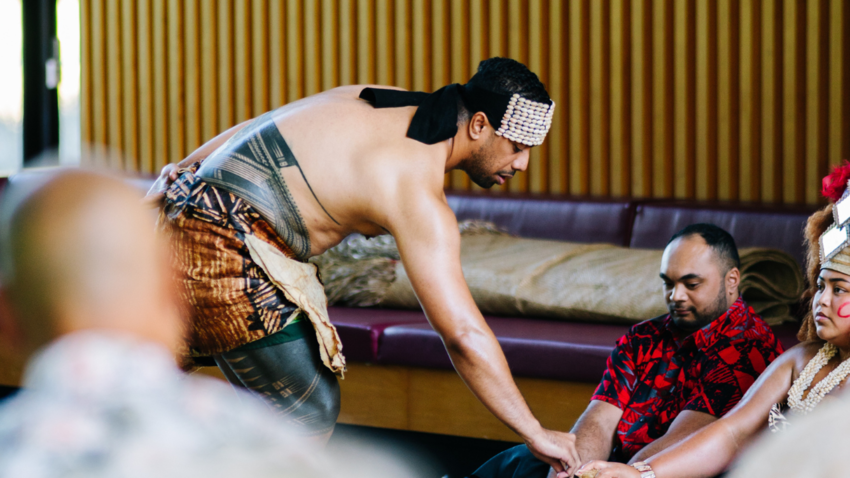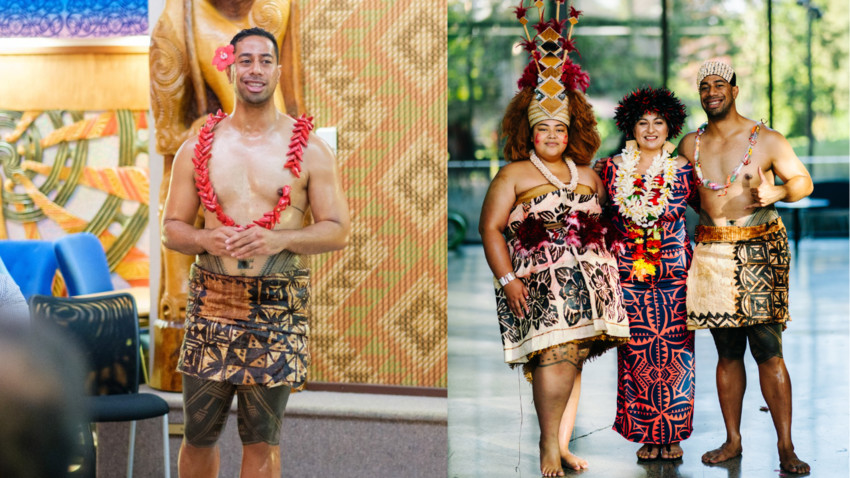Tatau: If you don’t have it, don’t judge

by Lefaoali’i Dr Dion Enari
As I near my one-year anniversary since receiving my pe’a/tatau, I couldn't help but reflect on the debates. We have all heard it before, from who deserves a tatau, if non-Samoan should be allowed to get it, and if one should be fluent in Samoan first. I do not wish to talk about these topics (today anyway). Instead, I wish to clear a few misconceptions and bridge understanding. As I believe if you do not wear the tatau, you should not tell someone who does, how to wear theirs.
My journey
I had wanted a tatau my whole life. As a kid I would draw tatau patterns on my legs and dream of my completion ceremony many times over. Everyone’s timing and reasons for getting one are different.
For me, I chose to get it upon the completion of my PhD, which was in Fa'aSamoa and mark myself as a life servant to my family, villages and nation. After finally getting the okay from my parents, we were good to go. The week leading up to it was one of the scariest times of my life. I didn't want to embarrass myself or bring shame to my family for not finishing. To calm my fear and nerves I told myself,
“You will leave this journey in one of two ways. Either in a body bag or with a finished tatau”

The weeks leading up to it, I prayed and meditated over and over again. I had spoken to so many people with the tatau for advice. However, one phrase stuck with me, and would be constantly repeated in my head.
‘Do not let the au (Samoan tattooing instrument) defeat you. The first tap is Taema and Tilafaiga and the rest are our ancestors who paved the way for us' Agapetos Fa’aleava.
This phrase highlighted two things for me. One, this will be the fight of my life and two even though it will be hard, my ancestors will guide the process. As I woke up for my first session, I had mixed emotions. One side of me was excited. I had waited for this day my whole life. However, the other side of me was full of fear, as I knew this would be the biggest test of my manhood. As I laid in front of the Tufuga (tattooist) ready to receive my first hit, I thanked Taema, Tilafaiga, my ancestors and pleaded to God for his mercy over me, as I surrendered my body to be repeatedly beaten by the au.

So, what did the pain feel like? In a nutshell, it was invasive, humiliating, and brutal abuse. It was the most torturous pain I had ever felt. They go from hitting your rib bones to opening your butt and shading it black. As Sonny Natanielu told me “A man’s life has not prepared him for this kind of pain and for this long”. Constantly feeling the wrath of the au, felt like death by a thousand cuts.
The pain journey took me to many places I had never been. I had confronting flashbacks of the past and encounters of the potential future. I saw family members that had passed on and was able to talk to them. The harder and longer the Tufuga hit me, the more pain I felt, and the more these visions became real. I was torn, I wanted the pain to stop because it was unbearable, but I also wanted it to continue, so I could stay in the spiritual realm.

It took me three weeks to complete my tatau, and to call it a rollercoaster ride would be an understatement. From struggling to breathe when I would bloat my stomach out, while they hit my belly button to feeling the love of my family and friends through song, prayer, and kind words. It’s a journey I will never forget, and one which has changed me forever, not only physically (with my tatau) but mentally too.
The Misconceptions
Having completed and survived the journey, I would talk with other men that had the tatau about their experiences and beliefs. We were unanimous in a lot of our thoughts to some misconceptions. One of them being the famous “He got his pe’a for fashion”.
Make no mistake, the pain is too tortuous, tormenting, and dangerous to be endured by any man ‘just for fashion’. We know that everyone who has a tatau has got heart, toughness, courage, and a crazy side to them. Completing the tatau demands the wearer to have these traits. It’s because of this, that when I see another person with these markings, I instantly feel a brotherhood connection. Even if we don’t know each other, we are connected through pain and ink.
As we kept talking, we also believed a lot of judgemental people on who and how the tatau should be worn, did not have one themselves. This is wrong, it’s like getting someone to officially judge a gymnastics competition who has never done gymnastics before, it's absurd. As they themselves have not gone through this process.
To make it clear, you can read heaps of tatau articles and memorise hundreds of tatau songs and legends, but it is only us who bear these markings and have shed our blood, that truly keep tatau alive. Many people know what the patterns look like and sound like, but only those of us who have had our kneecaps smashed in, know what it feels like. Both to receive it, and to wear it permanently from now, until death.

So, before you think of judging someone with these marks, please acknowledge that they finished a journey, many are too scared to take. To those who bear these markings, I got you uso and you got my full respect. To those who are preparing to get theirs, good luck and dig deep, you got this. Alofa atu.
-
Lefaoali’i Dr Dion Enari is a Lecturer at the School of Sport and Recreation,
Faculty of Health and Environmental Sciences at Auckland University of
Technology.
He holds a PhD in Samoan culture from Bond University, Gold
Coast with a Master of International Relations from Griffith University. His
Lefaoali’i (high talking Chief) title is from Lepa, Samoa.
His research interests include Sport Management, Sport Leadership, Mental Health, Pacific language,
Indigenous Studies, and Trans-nationalism.
Public Interest Journalism funded by NZ on Air
